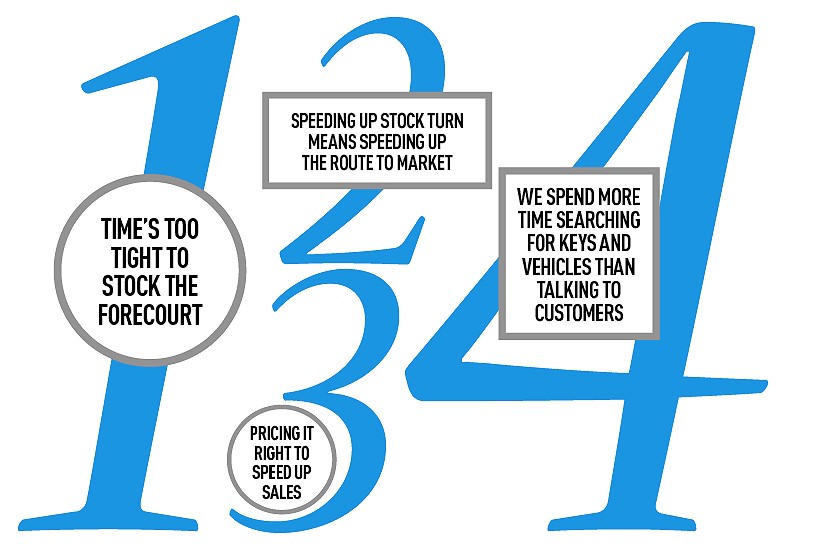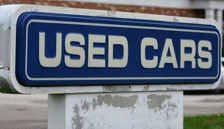Technology is one of the best ways for a used car sales operation to gain a competitive advantage. From smartphone apps and digital imagery and videos to delivery tracking systems, car dealers have a host of new innovations at their fingertips to help improve their stocking, management and sales processes. Here are four such scenarios where technology can be used to make used car sales more efficient.
1: Time’s too tight to stock the forecourt
It’s an all too familiar problem – you need the stock yesterday, but you don’t have time to go to a car auction, bid for the vehicle you want and then wait weeks for it to be delivered.
Help is at hand – dealers can now check on the condition of their preferred vehicle and buy through an online auction thanks to a range of new smartphone apps.
Aston Barclay developed its own buyer’s app after its research revealed that used car buyers were finding it increasingly difficult to source and access stock quickly. By using the app, buyers can now view and bid live for stock across Aston Barclay’s network.
Last year, Manheim sold 19% of its 422,000 auction vehicles through its Simulcast platform, which enables the auctions to be streamed live. Customers can then bid or instant message the auctioneer.
“Digital adoption is key to staying ahead of the competition and we urge all dealers to recognise the ways they can use technology in their own businesses to maximise profits,” said Peter Bell, Manheim’s managing director.
“The efficiency, effectiveness and simplicity of these online systems give customers access to auctions they would otherwise be unable to attend, which could mean the difference between a profitable and unprofitable month.”
2: Speeding up stock turn means speeding up the route to market
Suppliers are increasingly equipping pre-delivery inspectors (PDIs) with imaging and video tools to speed up the online marketing of the vehicle by enabling them to upload content directly to the dealer’s website.
AutosOnShow is one such supplier, and is introducing a series of innovations to integrate video along the customer journey, from sales to the service department.
“Buyers are increasingly doing their research at home and making accelerated buying decisions when they visit the dealership,” said Jonathan Higham, AutosOnShow’s managing director.
“As a result, the purchase process is driven by data and digital channels. From defleet to the dealer forecourt and service department, people need accurate descriptions and super-sharp images.”
Chiswick Honda uses an AutosOnShow DSLR turntable system to capture HD video and images of used vehicles that can be displayed on its website within minutes. It also provides an exploded view of the vehicle, internal 360-degree spins and framing.
Dealer Auction has also introduced a system that enables dealers to advertise newly acquired vehicles online immediately after buying them. The system allows dealers to fund the bid through NextGear Capital, use Movex to organise the vehicle’s collection and delivery and then list it on Motors.co.uk, all at the touch of a button.
3: Pricing it right to speed up sales
Many retailers have suggested that the data-led approach to used car pricing fails to recognise quirky specifications and PDI standards for the vehicle. A digitised valuation tool can help dealers to overcome this problem.
Cap HPI’s Black Book Live provides a ‘real-time’ daily valuation of vehicles, based on data received from retailers and wholesalers. Its editors then analyse that data to make sure it is up to date and correct.
Editors also monitor the first auctions of newly launched vehicles and assign an ‘opinion value’ based on the market movements they observe.
EnquiryMAX has also launched a part-exchange appraisal module, which captures the customer’s details and configures the vehicle they are interested in buying as well as providing an appraisal. It also enables the dealer to take pictures of new vehicles to pre-sell to customers who may be looking for a particular model and specification and to show videos of add-ons they may be interested in.
“The idea is that it speeds up the sales process by acting as a one-stop shop that links all the systems together,” said Jon Sheard, operations director. “It also gives the dealer an accurate reflection of the customer’s requirements and valuation of the vehicle.”
4: We spend more time searching for keys and vehicles than talking to customers
Dealers face a perennial problem of wasting time hunting for vehicles and keys when they could be selling to customers. However, smart technologies including barcode-enabled vehicle tracking systems and key trackers are now at hand to help the retailer.
Traka Automotive is a software solution that keeps track of who has which key, when it was removed and when it has been returned. It also enables the user to control access to vehicles and to see a full audit trail of all key movements.
If used effectively, it enables the dealer to be more productive, sell more vehicles, reduce costs and improve customer satisfaction. Harry Fairbairn, Scotland’s leading Mini and BMW dealership group, used the system to help minimise lost sales, increase the percentage of stock imagery posted onto its online store, speed up the preparation of its vehicles and improve PDI completion numbers.
“The Traka Automotive system enables us to locate where each car is parked and who had the keys last,” said Callum Rankin, dealer principal. “It also tells you which cabinet the keys are now in.
“It takes a couple of minutes to get all relevant keys together for a shoot now. With our previous system, it could take over an hour to locate all keys for each car being photographed.”
Case study: TrustFord
TrustFord developed its own barcode-enabled vehicle-tracking system for its Long Marston PDI centre. The system is based on the Amazon model and works by fitting the vehicle with a device that enables a customer to monitor its progress online.
The next phase will introduce ‘Bring It To Me Now’, where a customer can order a vehicle from another location and view its progress online. The system is still being tested, having been successfully used in TrustFord’s parts business deliveries over the past six months, and is expected to launch by the end of Q3.
“From a customer’s perspective, it’s all about speed of delivery,” said chief executive Stuart Foulds. “They can click on the vehicle they want, for example before 10am, with guaranteed delivery by 5pm the next day.
“In reality, 5pm would be the latest delivery time; what we would actually look to do is deliver it earlier, at say 3pm, and send you a text to notify you of that within good time.”
Case study: Fred Coupe Nissan
Fred Coupe Nissan signed up to the INDICATA online used vehicle management system, which provides its sales team with real-time insights into the demand, supply and pricing of used cars in their area to improve sales and reduce stocking days.
INDICATA, which is part of the Autorola Group, scans, processes and analyses publicly available data on vehicles. It then provides live used car market data, which in turn gives insights on market dynamics so dealers can measure their market position, monitor the performance of their networks and plan.
Fred Coupe’s sales team uses the data to decide how its inventory compares against competing stock in the marketplace, helping it buy used cars that are in high demand in their locality, helping to drive sales.
Simon Davies, sales manager, said: “We have piloted INDICATA for a few months and it is giving us the competitive advantage we need to sell more used cars in the area. It also supports our decision as to which part-exes we keep and which we sell, which is particularly useful for non-Nissan product.” ALEX WRIGHT


















Login to comment
Comments
No comments have been made yet.